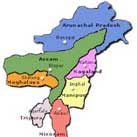Human Security Approach to Internal Security: Case Study of Reconciliation and Insurgency in Tamenglong, Manipur
Human security as a concept contends that the appropriate referent for peace and security should be the individual instead of the state. This Essay explores whether a human security-centred approach, i.e., a focus on the individual citizen’s concerns and security complements rather than contradicts state and national security.
- D. Padma Kumar Pillay
- July 2018








